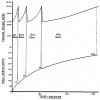This is brought on by a comment made by Deltic08 in the Capacity Problems at leeds -
Assuming straight and level track, what are the acceleration rates of classes (and sub classes) of Multiple Units?
Is this data available anywhere?
Please include the main classes of modernisation Plan DMU as well.
(All this assumes there are no electrical supply issues, and that any equipment is in 'as new' condition)
Not so much of a problem when electrified as stoppers can get away faster from a stop
Assuming straight and level track, what are the acceleration rates of classes (and sub classes) of Multiple Units?
Is this data available anywhere?
Please include the main classes of modernisation Plan DMU as well.
(All this assumes there are no electrical supply issues, and that any equipment is in 'as new' condition)


